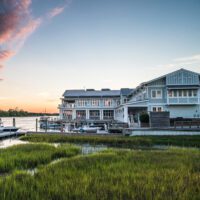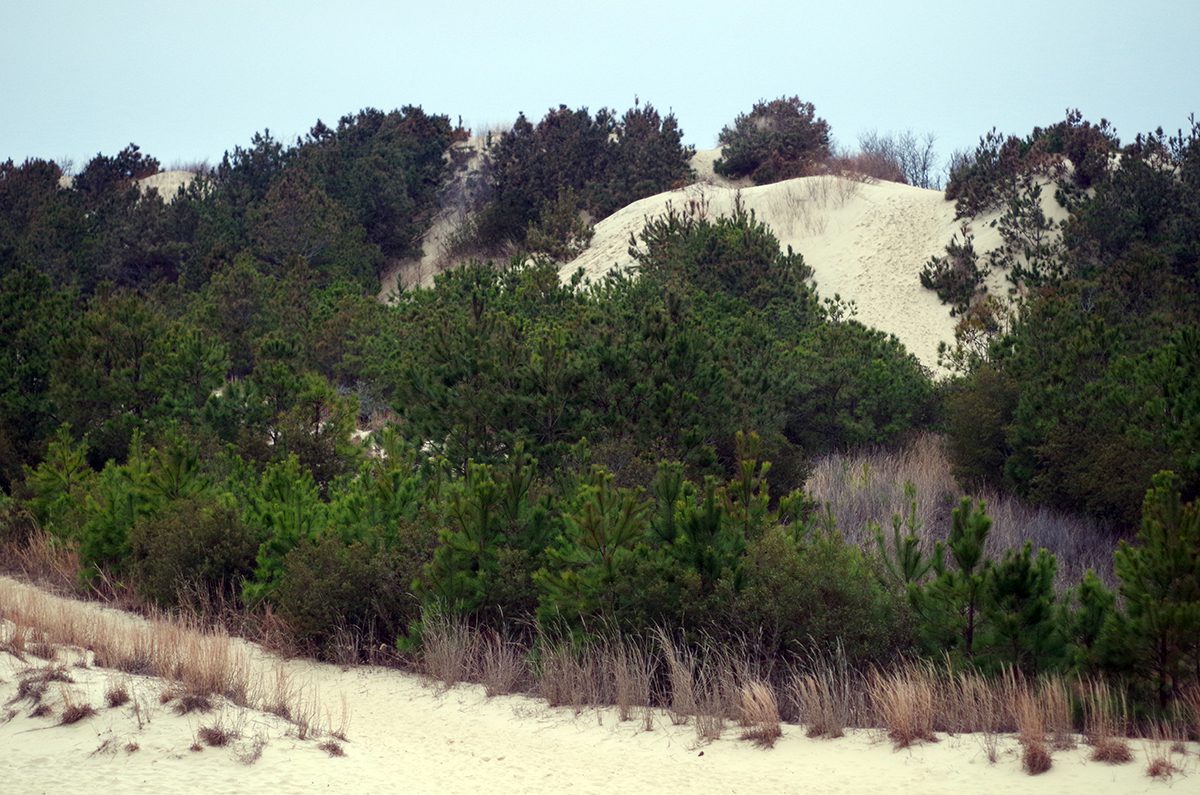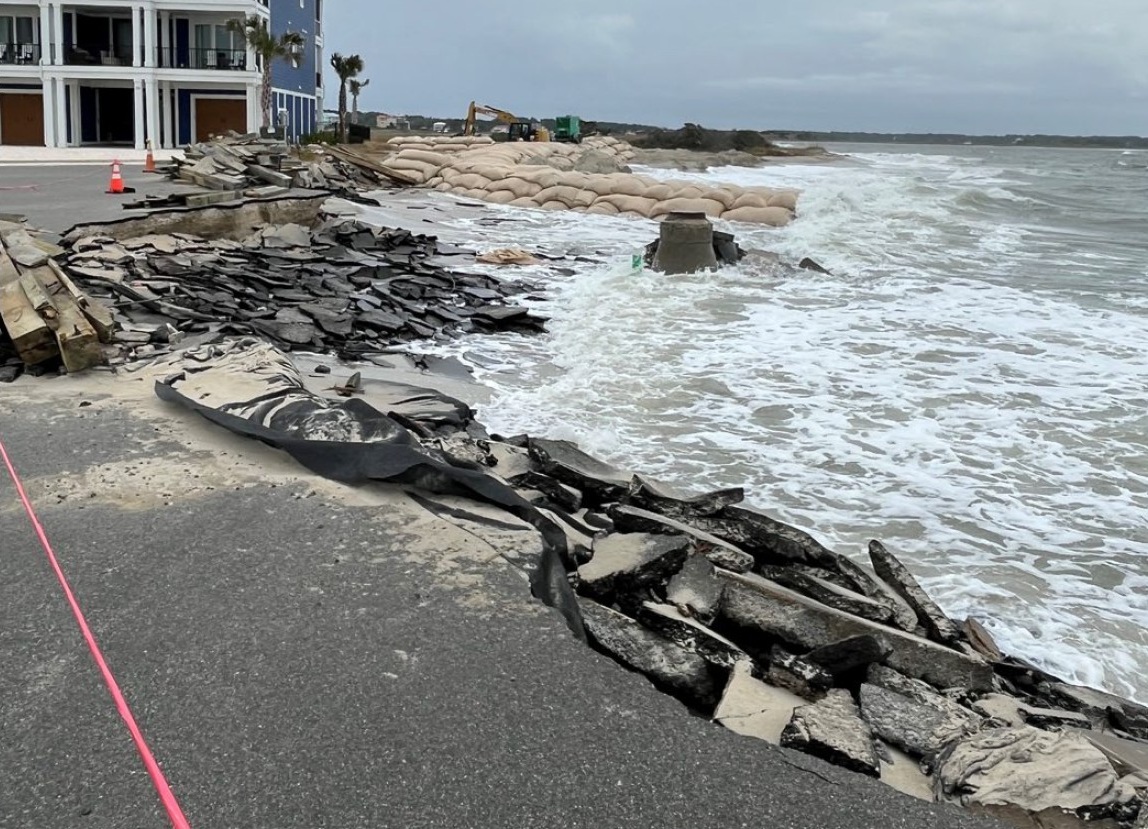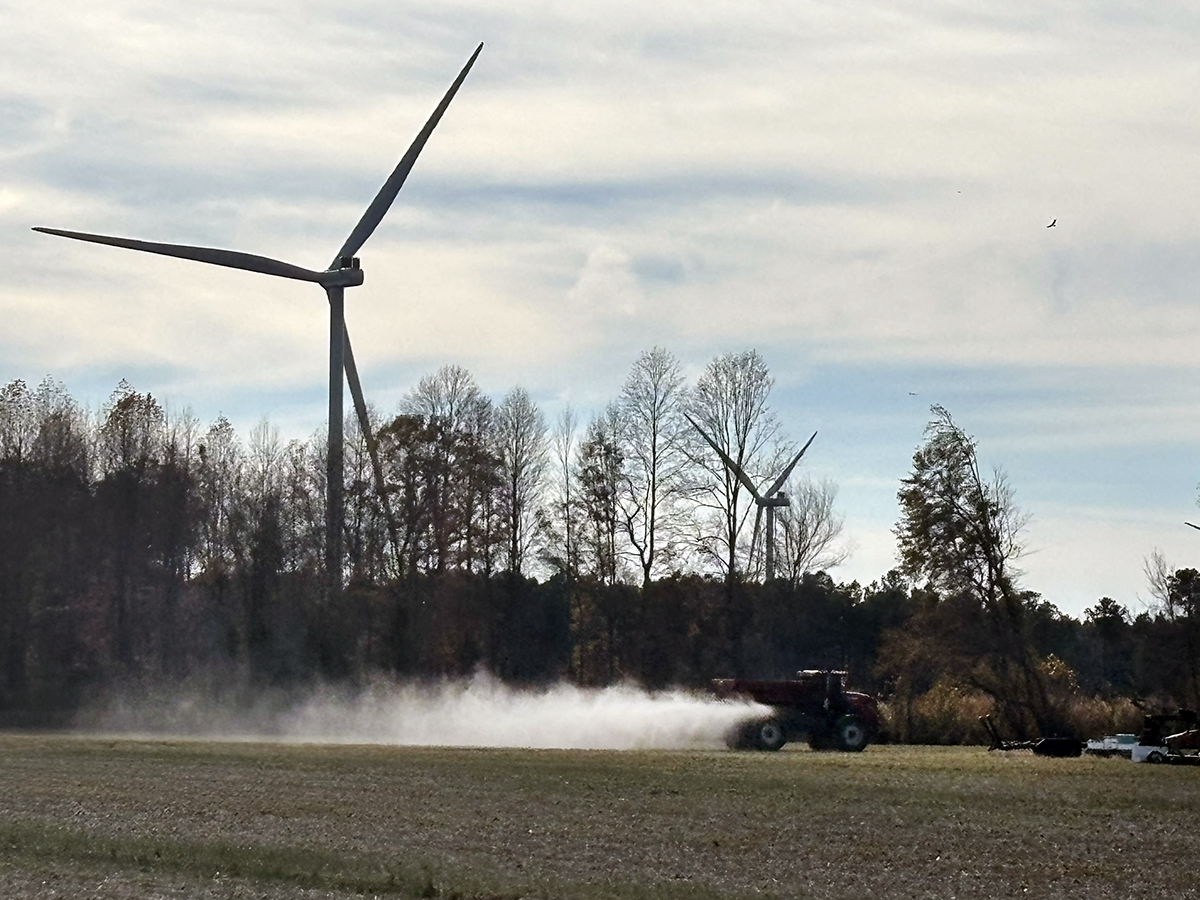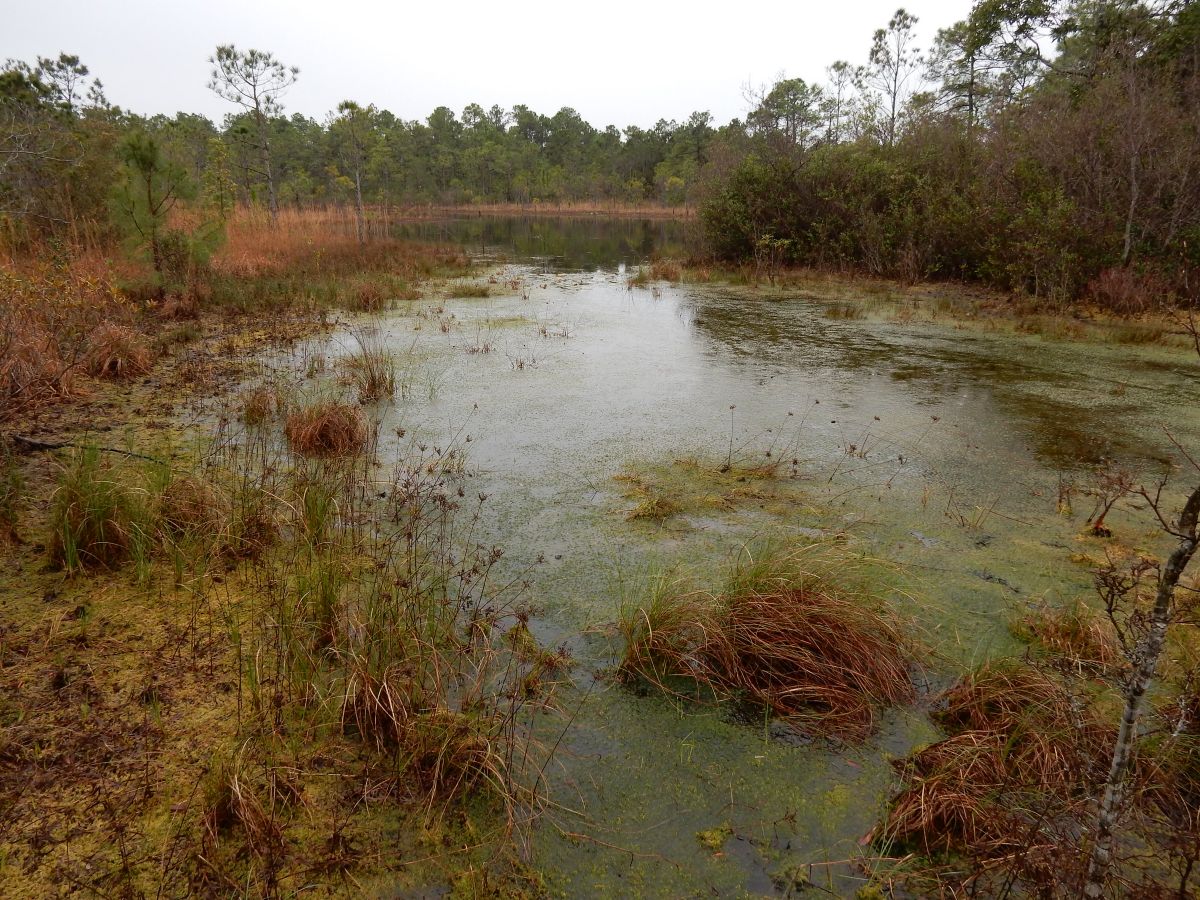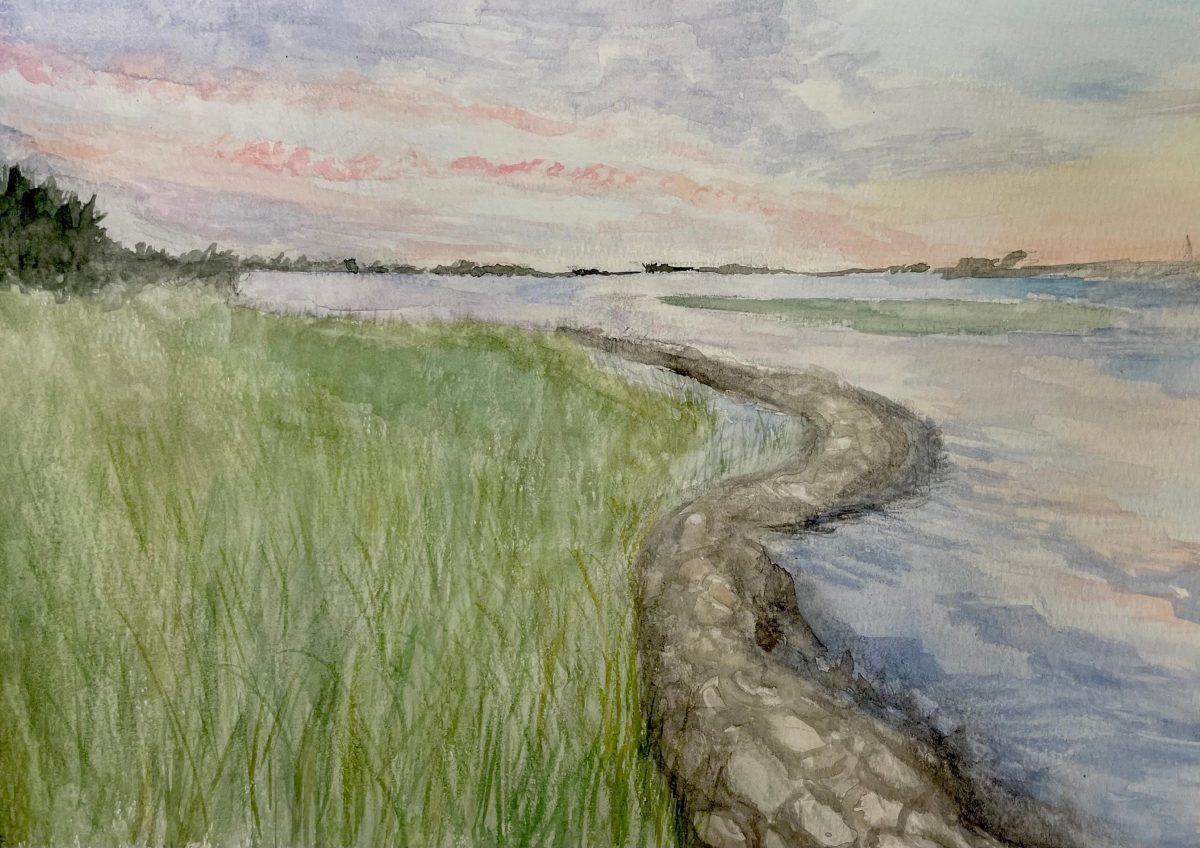
Guest Commentary
To stimulate discussion and debate, Coastal Review welcomes differing viewpoints on topical coastal issues.
Life along the North Carolina coast is steeped in saltwater – but the future seems to be drowning in it. With 1 meter of sea level rise expected by 2100, rising waters are already encroaching on low-lying coastal communities. Chronic flooding and intense storm damage have become the new normal. Stands of ghost forests, stressed to death by saltwater in the soil, announce a clear message: Move, adapt, or drown.
Supporter Spotlight
Folks who live here are figuring out how to trade resistance for resilience. Coexistence with the sea could become a bridge to the future. Bulkheads attempt to enforce a static line on a dynamic shore. The ocean continues to defy this hard boundary. The soft boundary of a living shoreline ensures connection doesn’t transform into fear, cooperation doesn’t sink into combativeness. Where do we start to build a future that works with the shorelines of North Carolina?
A rising crisis
The issue of sea level rise is urgent and unavoidable on NC coasts. Where roads keep flooding from higher tides and ditches don’t drain anymore, “you’re seeing it. This is sea level rise,” says Christine Voss, retired research associate at the University of North Carolina Chapel Hill’s Institute of Marine Sciences based in Morehead City. Even if they don’t use the phrase “sea level rise,” she says “people are noticing changes.”
Voss likens the situation to the health of a patient: “Sea level rise, that might be like your allergies… and then comes a hurricane. And because you may have been worn down by your allergies, when the cold or the pneumonia or the flu comes by, you’re actually more susceptible.”
She says that it’s easier for us to notice the big events like hurricanes, but really what we’re seeing with sea level rise is a cumulative effect of both hurricanes and a higher water table. Higher groundwater levels decrease soil’s ability to absorb floodwaters. The constant stress of waterlogged existence makes the coastal ecosystem immunocompromised.
For properties that border the ocean, a range of options exist to “hold the line.” Traditional gray infrastructure manages the coastline with solely hard materials. This includes concrete seawalls and fiberglass bulkheads that act as armor against constant wave action. Fully natural, or green shorelines, include sandy beaches and salt marshes that fluctuate with the tides. There are also shoreline management strategies that combine gray and green elements, such as sills with planted vegetation or oyster reef breakwaters.
Supporter Spotlight
Walling ourselves off
When threats loom, we resort to division, installing walls to armor ourselves against a fight with the waves. “We’re still pretending like we can hold it all in place for forever, everywhere…from Maine all the way around to Padre Island, Texas,” says Rob Young, geologist and director of the Program for the Study of Developed Shorelines at Western Carolina University. Fighting the ocean is a losing battle.
“Seawalls don’t stop the shoreline from moving,” he says. “It just sort of draws a line in the sand. Eventually the beach disappears in front of the seawall, because the seawall isn’t halting erosion.”

This combative approach against the sea is destructive to the very ecosystems that would protect us. The erosion of beaches amplified by seawalls is paralleled by the undoing of marsh by estuarine bulkheads. North Carolina has restricted the building of new seawalls since 2003 to protect beaches, but bulkheads against estuarine waters are ubiquitous, and the salt marshes they neighbor are in danger.

When a bulkhead is built, “the marsh is going to drown in front of it over time,” says Young. The waves bounce off the bulkhead and “tear up that marsh.” The impulse to protect our properties threatens the protection of our collective future.
Waves deflected by a bulkhead eat away at the land beside it, prompting another bulkhead to be constructed. Alyson Flynn, environmental economist at the North Carolina Coastal Federation, describes this hardening cascade: “it got to the point where people had no choice, because their neighbors’ property was causing their property to erode so much faster, because they had a seawall up, that they felt like the only way to protect their property was to also put up a seawall. And so then it had this barricading effect across the whole shoreline.”
A wall necessitates more walls until we’ve replaced the breathing border of marsh. Eight percent of NC’s coastline is hardened through bulkheads, groins, and jetties. A survey in North Carolina found that waterfront homeowners perceived bulkheads as the most effective shoreline protection, even though properties with bulkheads reported twice the cost of repairing hurricane damage as properties with natural shorelines. Yet permitting processes and homeowners still favor hardened infrastructure in pursuit of shoreline preservation.
“There’s this tendency to think that a seawall is easier and less expensive, and that’s not the case,” says Flynn. “Especially when it comes to some of the maintenance costs with living shorelines, it can actually be quite a bit cheaper, especially after storm events.”
Adding life to the line
Living shorelines, which replace the hard line of a bulkhead with opportunities for vegetation and wave attenuation, are a step in the right direction.
When Havelock homeowner Vernon Kelly looked out at the bulkhead on his property, worn down by years of storms, he had a decision to make: “Do I just replace it back with another and better bulkhead, or do I really look at creating another alternative?”
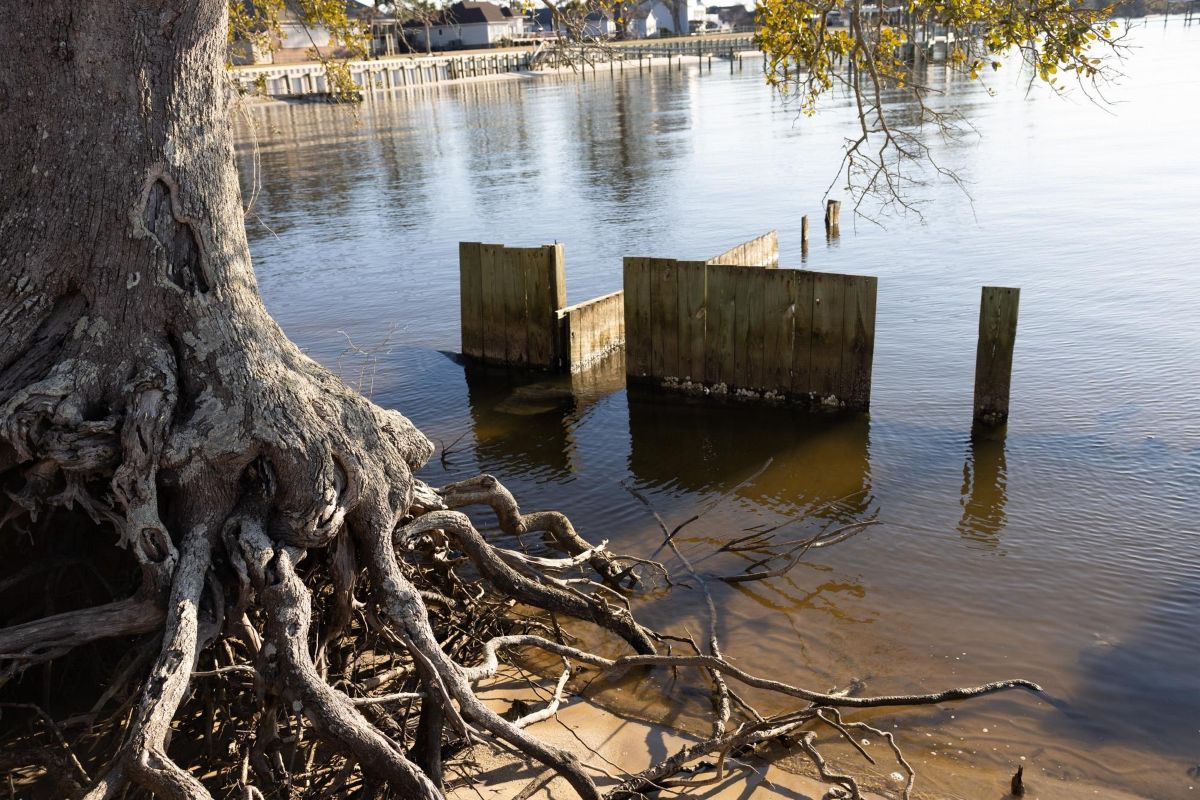
Kelly recognizes the value of nature that he witnessed as a state land surveyor. “I was out in the coasts, in the swamp…everywhere from Jacksonville to Down East,” he says.
He has seen his North Carolina change, witnessed the bulkheads of his neighbors fail to block the oncoming ocean. With assistance from the Coastal Federation, he installed a living shoreline and has since seen “a world of a difference.”
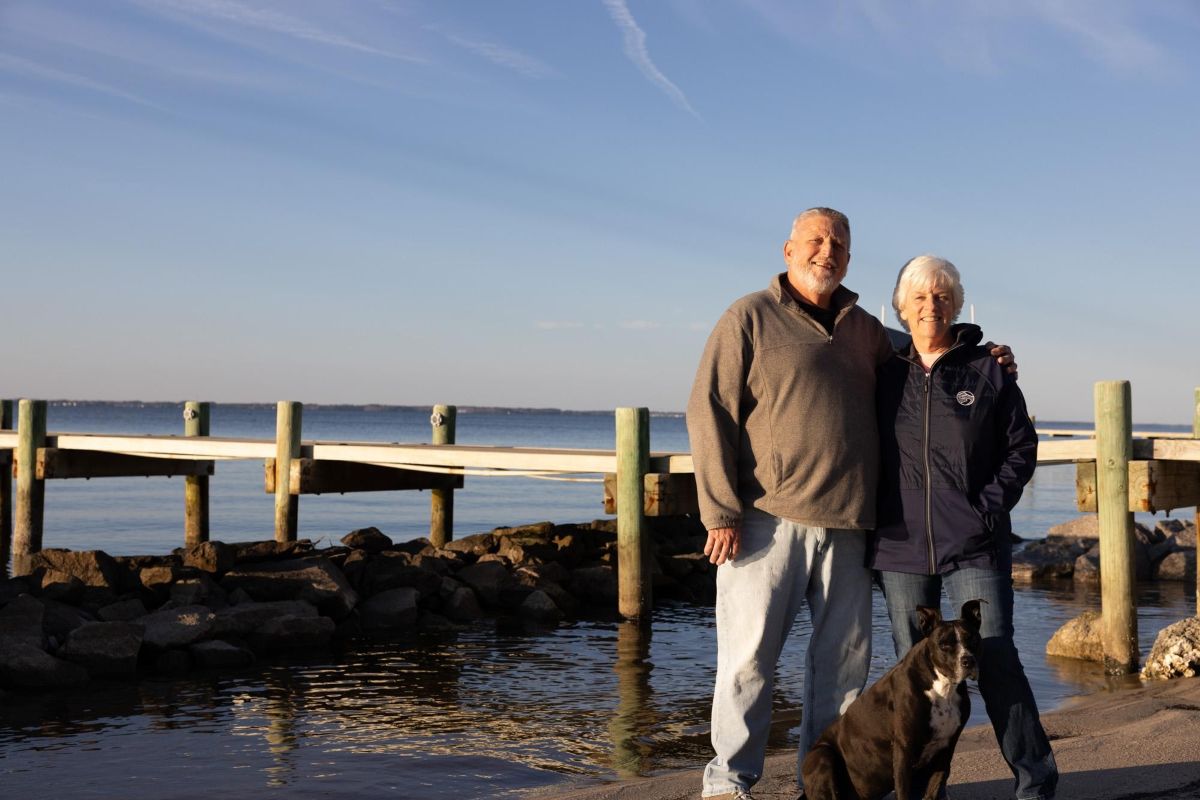
The nature Kelly treasures has become part of his backyard, complete with new saltwater neighbors. “Minnows seem to have figured out, ‘Hey, we’ve got a sort of a haven here.’ I’ve seen an increase of blue crabs in that sill area. And I actually had one oyster starting to grow,” he says.
The living shoreline didn’t just protect as a bulkhead would, it created space for life on that section of shore.
“What we’ve done, it’ll save it for my lifetime, maybe my kids,” says Kelly. “But if Mother Nature really decides she wants to do something, we can’t stop her.”

Not a solution, but a start
Living shorelines can’t stop the ocean from rising, can’t stop seawater from creeping inwards from the shore and raising the water table from below. Development on the precarious line between land and sea is built on the assumption that the line can be held with stronger armor. The coastline is not a property line to be guarded but a continually negotiated convergence of ocean and land.
The sea has sustained community here since the Coree fished the Core Banks and the Neusiok harvested along the Neuse River. Yet these life-giving waters are now described using language of wars and monsters. Framing storms and floods as opponents sinks us deeper into a combative mindset. We can’t hold the battleline if the ground itself is transforming beneath our feet. The coasts as we know them will not be the coasts of our future.
Embracing change might be the only way to navigate the changes we fear. “People are adaptable,” says Voss. “Enough people have to decide that things have to change.”
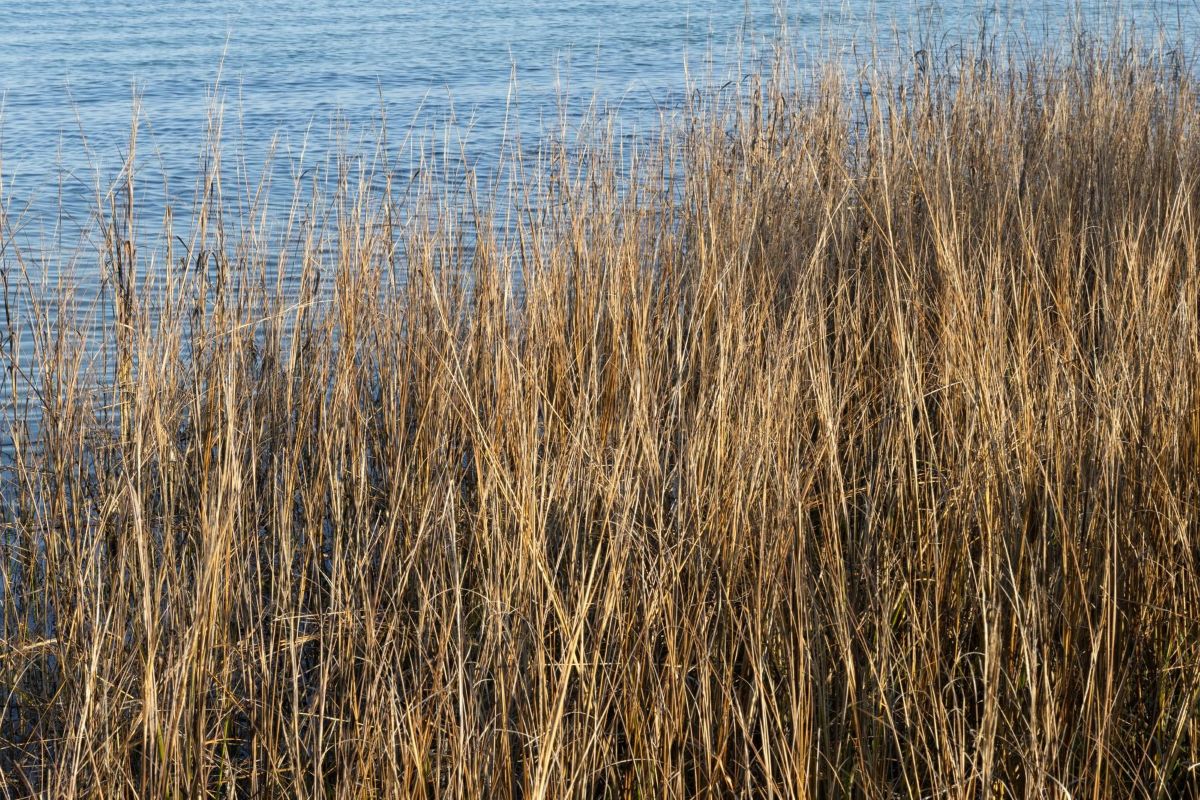
The salt marsh has a lesson to teach about handling change. Many shoots rooted in the soil, united in density and scope, can diffuse the force of oncoming waves. As the saltwater rises, the marsh travels.
Marshes migrate landwards, racing against sea level rise toward safety. Responding to change allows for a chance of survival. Marshes might not keep up with dire projections of sea level rise, but hardened shores don’t even give them a chance in the race.
When a migrating marsh hits a bulkhead, a line that refuses to budge until a storm forces collapse, the marsh is made static. Trapped between wall and rising water, the marsh suffers from “coastal squeeze” until it drowns. Confronting an inundated future, those on the coasts can choose to heed the lesson of the moving marsh or drown with the walls.

Living shorelines are not the answer to save the coasts but they are a potential action toward reimagining future coastal resilience. Relinquishing the ideal of a manicured waterfront is the start of embracing an alliance with the ecosystems we inhabit. Starting in backyards like Kelly’s, there is an opportunity to recognize the value of wetlands and begin to dissolve the walls, physical and philosophical, built between humans and the sea.
Note from Kocher: This article was reported, photographed, and written in partnership with the Pulitzer Center and the science journalism course at the Duke University Marine Lab in Beaufort.
Opinions expressed by the authors are not necessarily those of Coastal Review or our publisher, the North Carolina Coastal Federation.

